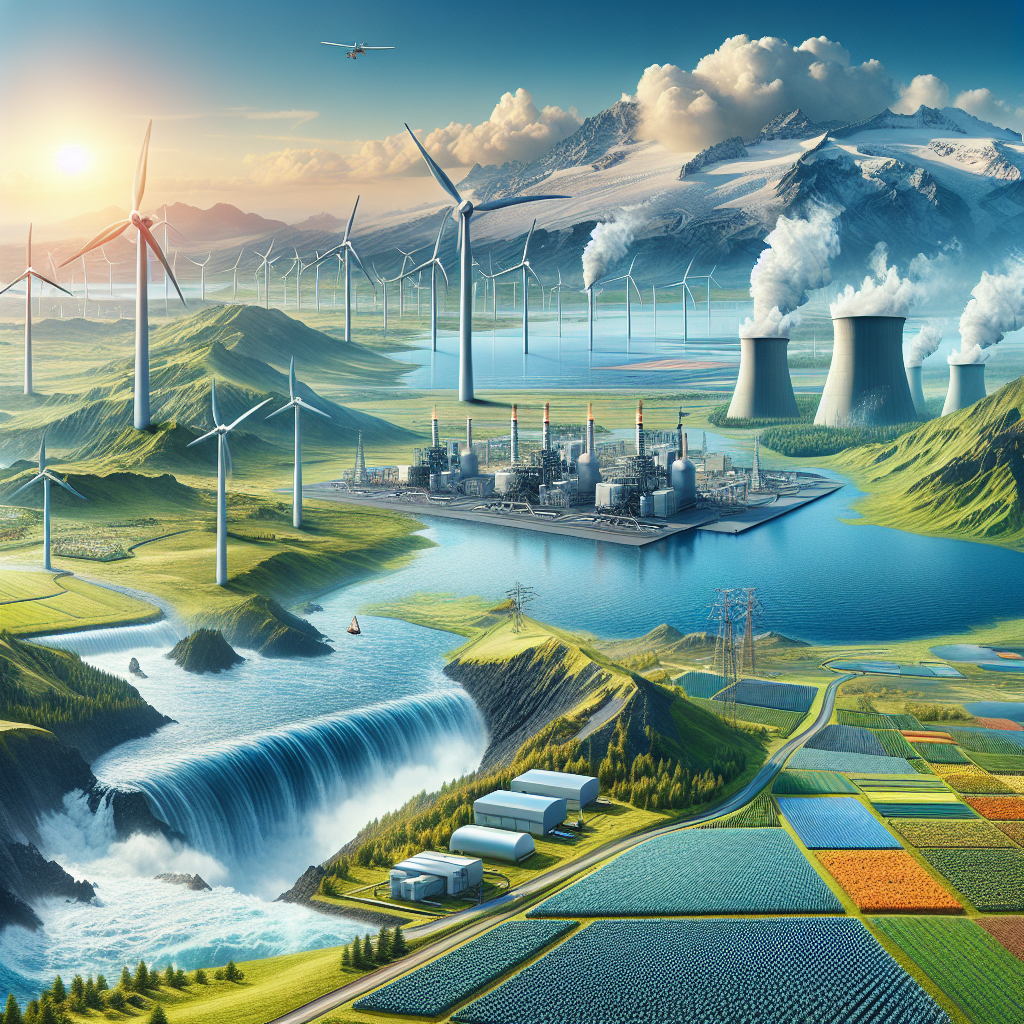Renewable Energy Technologies: Beyond Solar and Wind
The global energy landscape is undergoing a significant transformation, driven by the urgent need to mitigate climate change and reduce dependence on fossil fuels. While solar and wind power have emerged as frontrunners in the renewable energy sector, a plethora of other innovative technologies are poised to play a critical role in the energy mix of the future. These alternatives, often overshadowed by their more popular counterparts, offer unique advantages and can be harnessed in various settings. This article delves into some of these promising renewable energy technologies beyond solar and wind, exploring their potential to contribute to a sustainable and resilient energy future.
1. Hydroelectric Power
Hydroelectric power is one of the oldest and most established forms of renewable energy. It utilizes the flow of water, typically from a dam or a river, to generate electricity. Modern advancements have led to the development of run-of-the-river hydroelectricity and pumped-storage hydroelectricity, which offer more sustainable and flexible options for electricity generation. Despite concerns over ecological impacts and displacement, innovations in turbine and fish passage technologies are helping mitigate these issues, making hydroelectric power a cleaner and more efficient energy source.
2. Geothermal Energy
Geothermal energy harnesses the Earth’s internal heat to generate electricity and provide heating. This can be achieved through various methods, including geothermal power plants and direct use applications. Innovative technologies such as Enhanced Geothermal Systems (EGS) are expanding the potential of geothermal energy by allowing access to heat resources in areas without natural hydrothermal deposits. This continuous and reliable energy source could play a significant role in providing baseload power and heating solutions worldwide.
3. Tidal and Wave Energy
The ocean is a vast source of untapped energy, with tidal and wave energy representing two of the most promising ocean energy technologies. Tidal energy utilizes the natural ebb and flow of coastal tidal waters, while wave energy captures the power of surface waves. Both technologies are in the early stages of development but hold immense potential due to the predictability of tides and the vast energy contained in waves. Innovations in turbine designs and floating platforms are making these energy sources more viable and cost-effective.
4. Biomass Energy
Biomass energy involves the use of organic materials, such as plant matter and waste, to produce electricity, heat, or biofuels. This technology is unique in its ability to convert waste into valuable energy, thereby reducing landfill use and greenhouse gas emissions. Advances in biomass conversion technologies, including gasification, anaerobic digestion, and bio-refining, are improving the efficiency and environmental impact of biomass energy. However, sustainable sourcing and the avoidance of competition with food production remain critical concerns.
5. Hydrogen Fuel Cells
Hydrogen fuel cells offer a clean and efficient way to produce electricity, with water vapor as the only byproduct. While traditionally reliant on natural gas, advancements in electrolysis technology allow for the production of hydrogen using renewable energy sources, making it a truly green option. Hydrogen can be used in fuel cells to power vehicles, provide electricity, and store energy, offering a versatile and zero-emission energy solution. The development of infrastructure and reduction of costs are key areas of focus for the widespread adoption of hydrogen energy.
FAQs about Renewable Energy Technologies Beyond Solar and Wind
Q1: Are these alternative renewable technologies cost-competitive with solar and wind?
A1: While some alternative renewable technologies are currently more expensive than solar and wind, costs are decreasing due to technological advancements and increased investment. For instance, geothermal and hydroelectric power are already cost-competitive in certain regions. Additionally, the unique benefits and applications of these technologies often justify the investment.
Q2: Can these technologies provide a reliable power supply?
A2: Yes, many of these technologies can provide a reliable and continuous power supply. For example, geothermal and hydroelectric power can offer baseload power, while tidal energy is highly predictable. The diversity of these technologies also allows for a more resilient energy system that can adapt to varying conditions and demands.
Q3: What are the main barriers to the adoption of these technologies?
A3: Key barriers include high initial costs, technological challenges, regulatory hurdles, and environmental concerns. However, ongoing research, policy support, and public-private partnerships are addressing these challenges, paving the way for wider adoption.
Q4: How do these technologies impact the environment?
A4: While all energy sources have some level of environmental impact, these renewable technologies generally have a lower impact compared to fossil fuels. Efforts are being made to minimize ecological disturbances, such as improving fish passage in hydroelectric dams and ensuring sustainable biomass sourcing.
Q5: What role do these technologies play in the transition to a sustainable energy future?
A5: These technologies complement solar and wind energy by providing additional and sometimes more reliable energy sources. Their diverse applications and benefits are crucial for creating a balanced, sustainable, and resilient energy system that can meet global energy needs while addressing climate change.
Conclusion
The journey towards a sustainable energy future is complex and requires a multifaceted approach. Renewable energy technologies beyond solar and wind, such as hydroelectric power, geothermal energy, tidal and wave energy, biomass energy, and hydrogen fuel cells, present exciting opportunities to diversify and strengthen our energy systems. By continuing to invest in and develop these technologies, we can unlock their full potential and make significant strides in our quest for a cleaner, more sustainable world.

